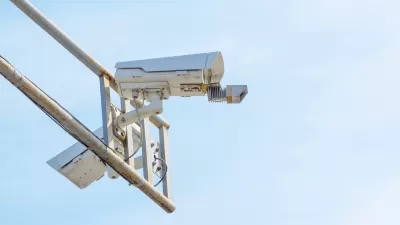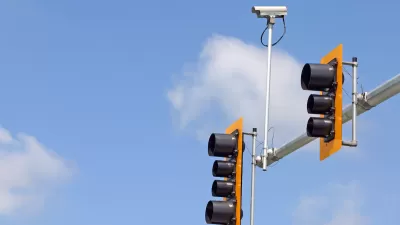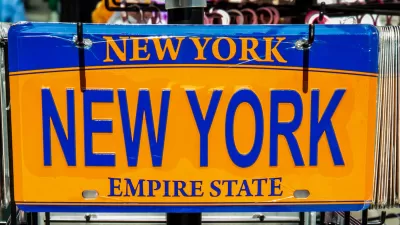More widespread deployment of automated enforcement sensors could change the system from one of high fines and sparse enforcement to one that encourages more extensive behavior change.

In an opinion piece in Greater Greater Washington, John Leibovitz calls on the District of Columbia to double down on its automated traffic enforcement program. Despite common concerns about privacy and equity, Leibovitz argues that boosting automated traffic enforcement (ATE) is “an essential tool” for reducing roadway fatalities and ensuring compliance with speed limits and other road rules.
The district already plans to triple the number of cameras it installed during a recent pilot program, but Leibovitz says many more are needed to ensure widespread compliance. With less than one percent of the district’s streets covered by ATE, this won’t have an impact on ‘global’ driving behavior. The sparse placement of cameras also brings up questions about equity, which areas get protection, and which drivers get ticketed. “It is important to note that both questions are intimately related to the first limitation–the scarcity of cameras–which inherently drives both a logic of high fines and raises hard choices about where to deploy them.”
Leibovitz advocates for a “safety zone” model of deployment that uses abundant sensors to replace a system of high fines and irregular enforcement with “a paradigm of widespread compliance with much smaller fines designed to ‘nudge’ drivers to safer behaviors on a more continuous basis.” An enhanced ATE program would also give cities more data, create a more immediate driver feedback loop, and could inform more tailored enforcement strategies.
FULL STORY: It’s time to “think different” about automated traffic enforcement

Planetizen Federal Action Tracker
A weekly monitor of how Trump’s orders and actions are impacting planners and planning in America.

Congressman Proposes Bill to Rename DC Metro “Trump Train”
The Make Autorail Great Again Act would withhold federal funding to the system until the Washington Metropolitan Area Transit Authority (WMATA), rebrands as the Washington Metropolitan Authority for Greater Access (WMAGA).

The Simple Legislative Tool Transforming Vacant Downtowns
In California, Michigan and Georgia, an easy win is bringing dollars — and delight — back to city centers.

The States Losing Rural Delivery Rooms at an Alarming Pace
In some states, as few as 9% of rural hospitals still deliver babies. As a result, rising pre-term births, no adequate pre-term care and harrowing close calls are a growing reality.

The Small South Asian Republic Going all in on EVs
Thanks to one simple policy change less than five years ago, 65% of new cars in this Himalayan country are now electric.

DC Backpedals on Bike Lane Protection, Swaps Barriers for Paint
Citing aesthetic concerns, the city is removing the concrete barriers and flexposts that once separated Arizona Avenue cyclists from motor vehicles.
Urban Design for Planners 1: Software Tools
This six-course series explores essential urban design concepts using open source software and equips planners with the tools they need to participate fully in the urban design process.
Planning for Universal Design
Learn the tools for implementing Universal Design in planning regulations.
Smith Gee Studio
City of Charlotte
City of Camden Redevelopment Agency
City of Astoria
Transportation Research & Education Center (TREC) at Portland State University
US High Speed Rail Association
City of Camden Redevelopment Agency
Municipality of Princeton (NJ)





























